Let's Talk About Play - Zach Gage - March 23rd 2013 - Delivered at Resonate.io
one quick note about what follows: these are my notes for the talk. I type all of my talks out stream of conciousness before i give them so that i can be sure that my ideas are well organized. When i actually deliver the talks i often adjust my words before i say them to make them flow better. As such, there may be typos or ugly sentences in here, don't worry about them.
---------
hi, so i'm zach gage. I'm a conceptual artist and I also make video games.
in case you're not super familiar with my work i'm going to do a really quick run-through of my history now. The reason for this is because this is a talk about the things that I learned making video games and how I apply some of the thinking and understanding to my art.
I should also mention that I've never given a talk about rhetoric before, normally I really dont care about how people discuss their own work, but in this one small case, I do feel like the rhetoric underscore's an area that artists could understand better about games, and by extension their own work, and so thats why I'm bringing it up now.
I also don't want to presume that I really know what I'm talking about. I'm not a deep reader of philosophy books, and I wouldn't pretend to be. I'm not even really a reader of philosophy books at all, I'm more of a reader of philosophy book titles. These are just thoughts based off of my experiences.
Anyhow, my artistic career started back in college doing generative work, aping from stuff I saw online from the likes of Jared Tarbell or Joshua Davis.
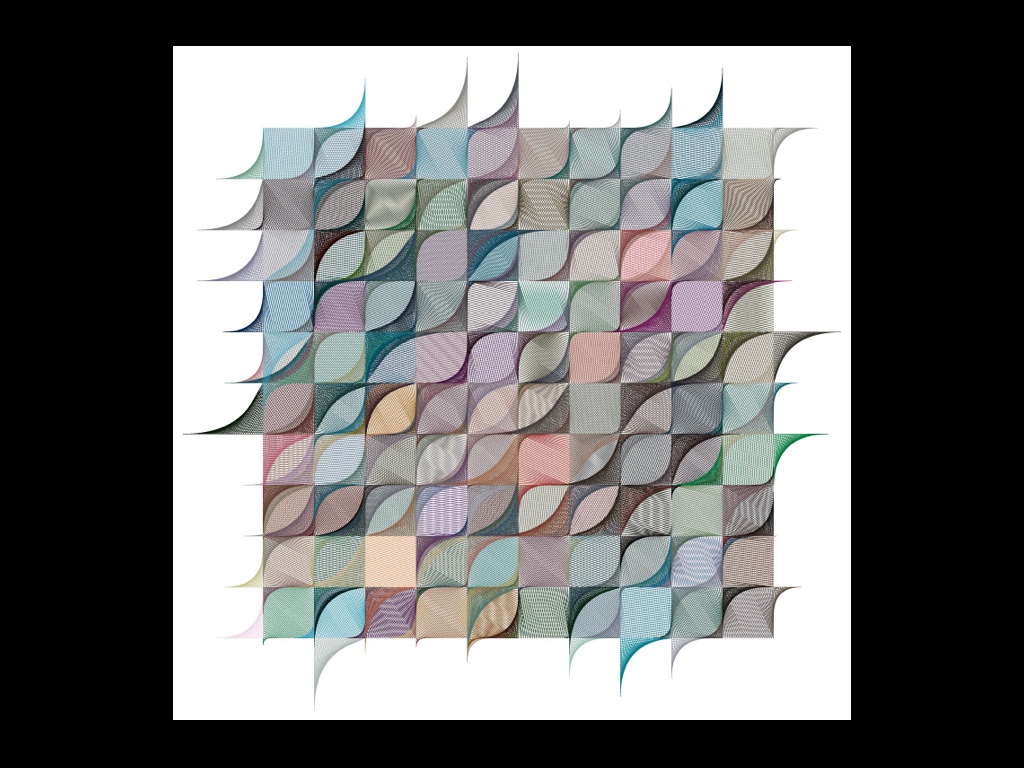
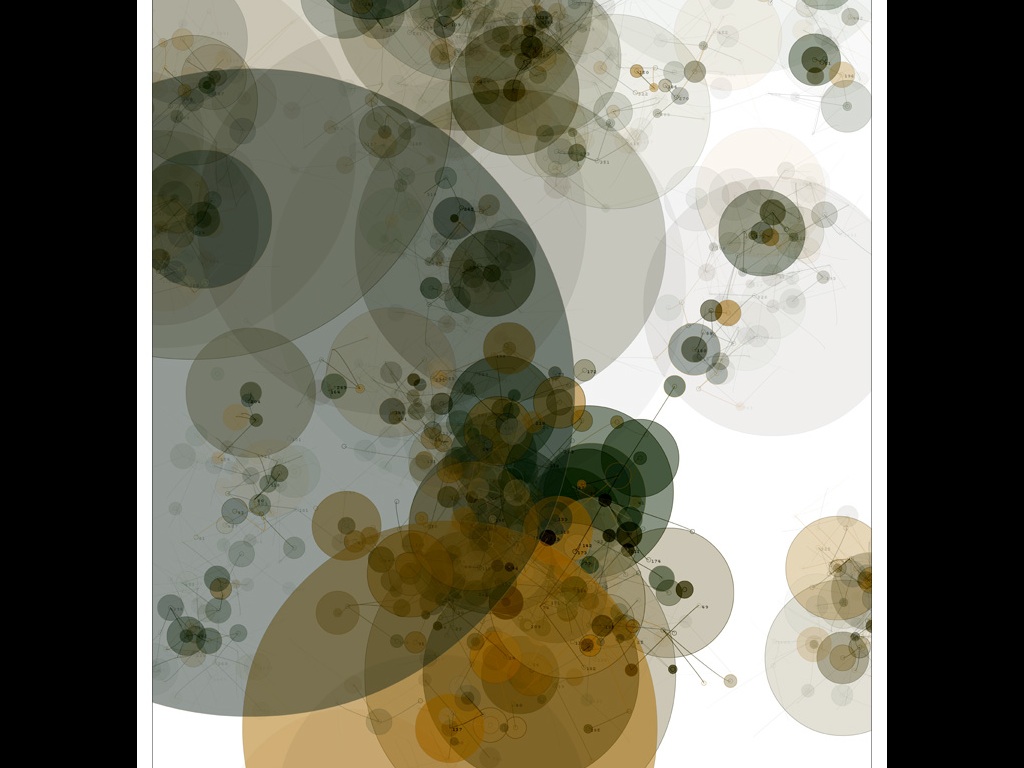
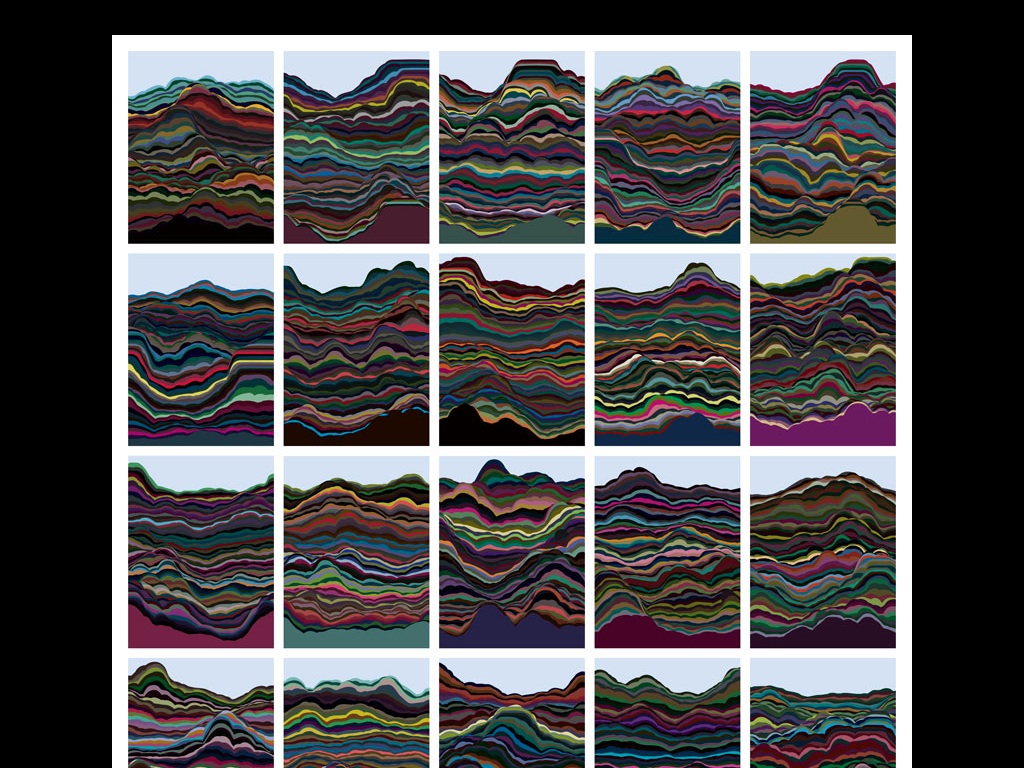
I quickly evolved into working on more interactive works and from there moved into conceptual interactive work. A lot of what people would consider to be my main body of work revolves around the idea of believing that the digital world is in many ways as real as the physical one, and using that idea to interrogate the lives we lead in the physical space though the lives we lead in the digital world.
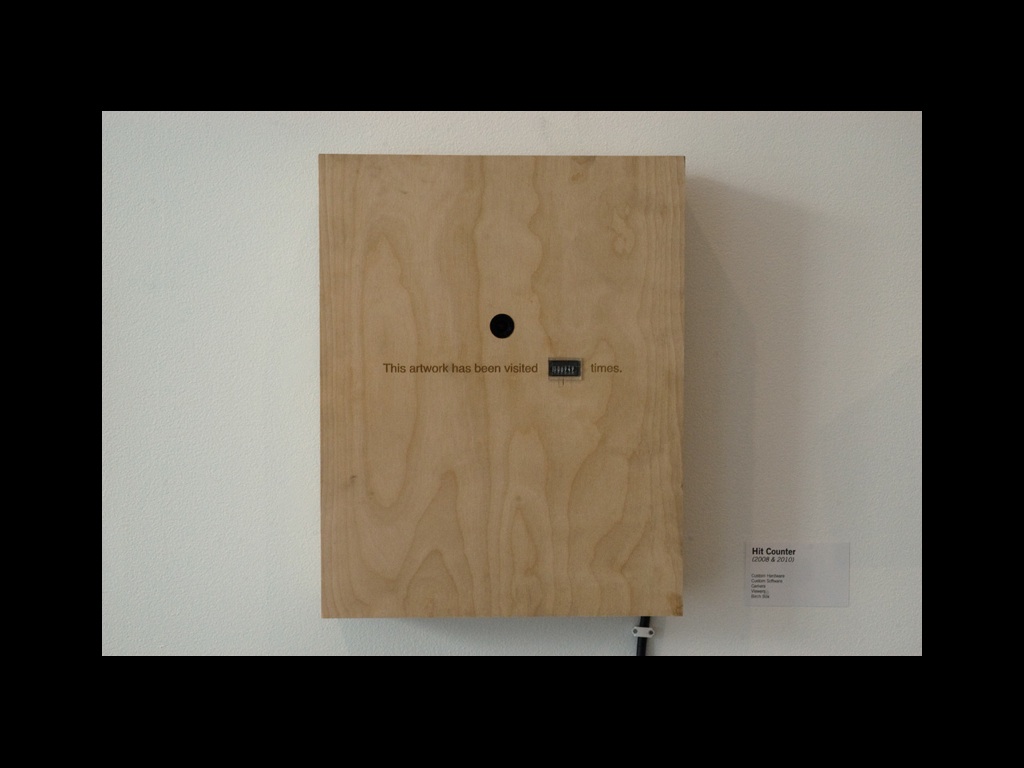
For example, one project I worked on 4 years ago was called Hit Counter, and it was about our obsession with using popularity as a metric for quality. The project was meant to question the use of something as problematic as popularity as the metric for our digital lives. We created the internet from scratch, why did we decide that popularity was the best quality metric to use? The project is a physical replica of the old internet hit counters that were really prevalent in the 90s. It says 'this artwork has been visited x number of times', and uses a camera and face detection to increment the number when people look at it.
It's a playful piece that brags about how popular it is and forces viewers to confront how they feel about popularity. Does the number make the piece important? Why? Or if not, why does it make youtube videos or Facebook profiles seem important?
A more recent project is Can We Talk? a chat program I made for people who want to have intense and important conversations over text. The sort of elevator pitch is 'what would a chat program need if you wanted to use it to break up with someone'.
The whole project was about how important text is as a medium of communication. How theres this fallacy that we have that text is antiquated and video-chatting is the optimal way to talk… at least until we get holograms. But this just isn't true. Text is a completely different style of talking, and it provides us with a lot of upsides compared to video. Most notably, because you're not looking someone in the face, bringing up uncomfortable or difficult topics is much easier in text.
But I feel like text chat has stopped evolving. The last huge evolution was the notification that your partner was typing. Google Wave tried to expand on this a bit by having your text just show up straight away as you typed it, but that seemed to make people uncomfortable. What is interesting to me, is that both of these additions attempted to solve the same problem, which is ambiguous silence. In text, if you go out on a limb to say something, and your partner doesn't respond, theres no way to know if they're not responding because they're shocked or appalled, or because they're grabbing a cold slice of pizza from the fridge. Its nerve-racking, and it damages the medium's ability to convey important information. Can We Talk? attempts to solve this problem by using face detection to let your partner know the likelihood that you've seen what they're writing. the opacity changes based on wether or not you're in front of the computer and wether or not the application is in the background. it can even tell if other application windows are partially or fully obscuring the text you wrote.
A third and fundamental project I worked on was called Lose/Lose and is a video game about the importance of digital data. I had been noticing that people tended to treat their digital data and physical data differently, even though in many cases the data had the exact same importance. For example, if you had baby photos that were physical, they were probably kept inside a cherished photo album on the shelf or in a well labeled box the attic, but as digital photos, they might still be on your cellphone, never downloaded and protected. Lose/Lose apes old school video games like space invaders, except the aliens on the screen are generated out of your files (in their appearance and behaviors), and when you kill one of them, the file that inspired it is deleted forever, and you're never told which file it was. If you die in the game, the game deletes itself. In this way, it fore-fronted the importance of our digital files, and contrasted that with some of the recklessness that is common to our digital experience, especially in games.
One thing that was particularly amazing to me about this project was watching it's viral dissemination into game communities, something I never expected to happen. A high point was when one gamer explained the idea of 'conceptual art' to another gamer, without ever using the word art. This was the first time it really hit home just what a huge reach games have in our culture.
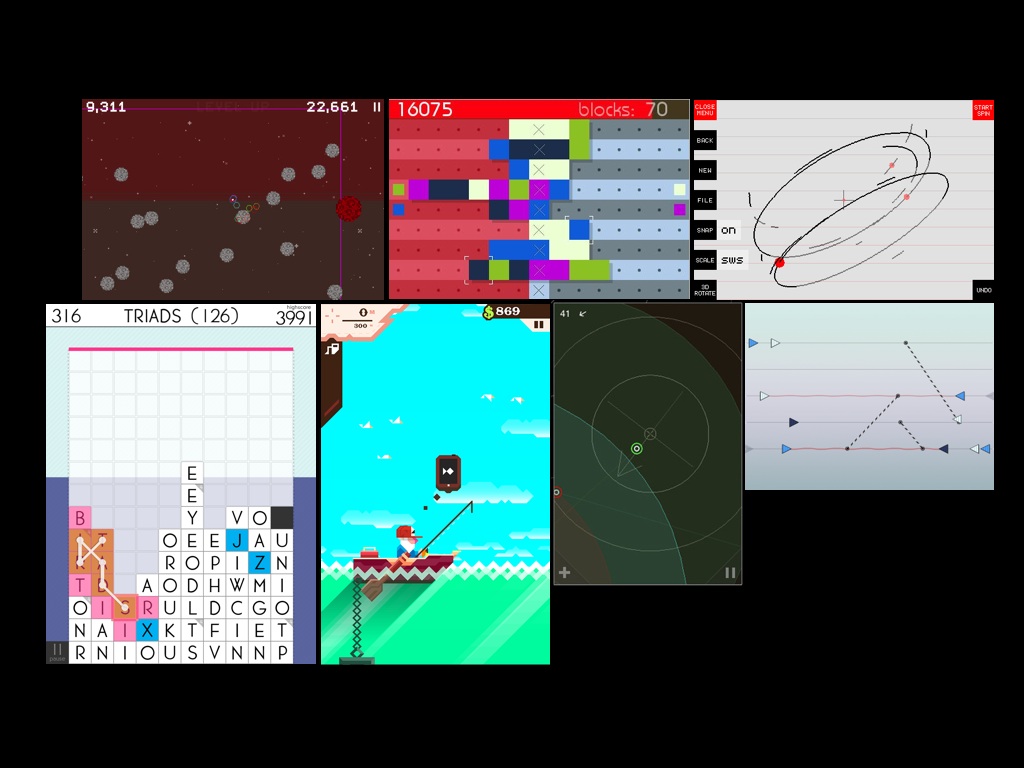
At this point in my career I made a switch, and started really engaging in game development. I started releasing games on the iOS App Store. I started attending to conferences like GDC and indiecade, I made lots of friends in the game development scene. I attended talks on game design and the philosophy of play. I learned about games as they are now, as they were thought about in the 70s. I learned about fluxus art. I thought about the incredible histories of games like Chess and Go, how important those works were from an artistic and cultural perspective. I had first hand experiences of how powerful games could be, experiences that dwarfed anything lose/lose taught me, even with my own games. So far I've released 5 games and two musical toys.
And all this time, i've been a bit barraged in the game scene as being a person who came from art. Games have a great desire (and I think a right) to be considered art, and because of my background, a constant question in interviews that has always surfaced has been something about games and art.

Recently, I've started working on conceptual art pieces again (most recently a fortune teller based around twitter), and something that has been shocking to me is that now that I've somewhat returned to the art community, I'm once again hit with the art and games question, but from the other way around.
Not only are games interested in achieving the cultural status of art, but art seems to be interested in achieving some of the cultural qualities of games, mostly the cultural engagement, the viral obsession, and the sustainability. And of course this makes sense. one thing that has been absolutely shocking to me is that I've been in a number of art shows recently, often with artists who i think are way more talented than I am, and not once have i learnt that they're self sufficient. Everyone has a second job. The lucky ones have a job that is similar to their artistic interests. But in games, successful practitioners get to work for themselves, only making the creative work they want. It's astonishing.
So clearly both fields have a lot to learn from each other. Or so you would think.
But the thing that I noticed, upon returning to interactive art, is that really, the two fields have massive overlap. In fact in a lot of ways, the only differences appear to be contextual.

For example. Compare performance work like Marina Abramović's Rhythem 0 where she placed 72 items, including a gun, on a table, and invited her audience to use them however they wanted, with Frederik Berg Østergaard’s Live Action Roleplaying Game Fat Man Down in which “the fattest male player” plays the Fat Man in a number of scenes, where the other players’ characters try to torment the hell out of him.
Fundamentally, one of the biggest differences in these two works is how we're talking about them. In Rhythem 0 the interactors are called "the audience", and in Fat Man Down they are "the players".
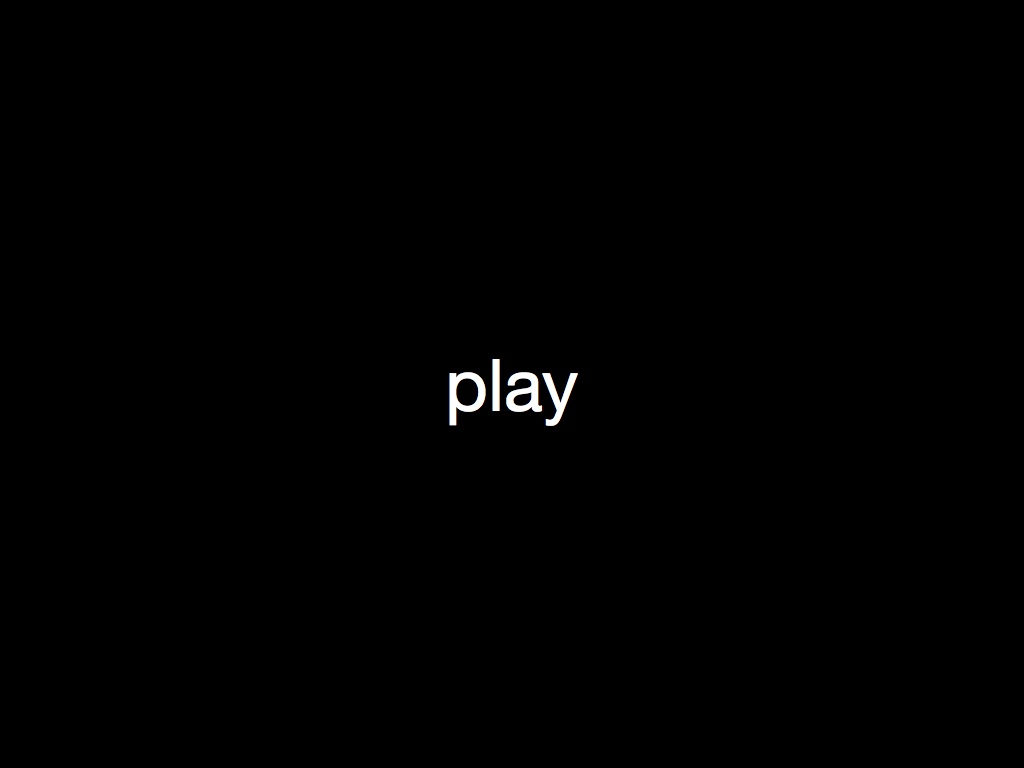
I think this use of the word Play here is fundamental and important. Not to knock performance art, but if we're honest about whats going on, those people interacting with Marina were playing. Play can be serious like that. In fact, thats ultimately what is scary and interesting about the piece to begin with. That play can even exist in a context like that. That a gun can be involved in play. That play can broach real actual danger.
Play is a funny word to skip for interactive art. But it's one that I can understand why it might be skipped. When I look around for examples of people talking about play in art, it's always about children. Theres this false idea that adults don't play, or shouldn't play. That play can't explore truly sublime ideas.
But adults play all the time. Adults play video games, they play in negotiations, they play at work, they play in sex. The idea that play is something to be avoided in artistic discussion is insane to me.
To be presumptuous, I think play is a poisonous word in the stark vocabulary of the art academy. Play is considered dumb. Play is considered a lowly form of engagement.
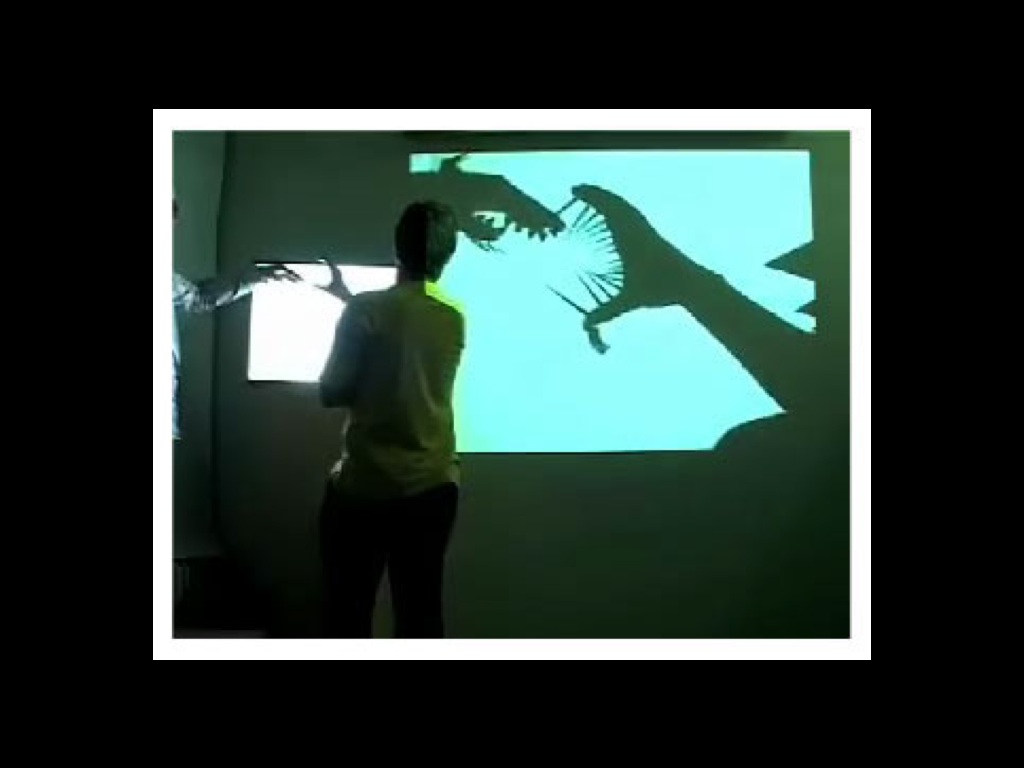
Read this descriptive text of Philip Worthington's Shadow Monsters piece from the MoMa's Design and the Elastic Mind show. A work built on the idea of playing Shadow Puppets:
"In this installation, interaction designer Philip Worthington radically enlivens the timeless amusement of creating shadow puppets with the support of a computer, a camera, two projectors, a light box, and original code. The fantasy of monsters materializing from the shadows becomes a reality, thanks to vision-recognition software that augments the gestures of participants with sound and animation.
To activate the installation, step in front of the light box and make shadow shapes with your body: mouths with razor-sharp teeth will surface; tongues, eyes, and fins will appear; and birds will squawk and dinosaurs burp.
The focus of interaction design is the user’s experience of—and with—digital artifacts, including the behaviors, new habits, and other effects that they elicit. It is a field MoMA has been exploring and collecting extensively and one of the most important and oft-discussed expressions of contemporary design creativity."
Look at that language! He "radically enlivens the timeless amusement of creating shadow puppets". "To activate the installation". They're taking outrageous effort to avoid ever mentioning play. So much so that in the end, the description says nothing, just that the work is about interaction and that the MoMA is interested in interaction.
Why avoid play? Play is a fundamental quality of human experience. Play is as important as Beauty and Pain and Revelation. Play is what we do when we are curious and motivated. Play is one of the most compelling ways we learn, because Play teaches us lessons that we can't always explain. Play gives us experience, not just knowledge. In that way, Play is quite the same as Art.

Look at this work Sunset Solitare by Joe McKay where he wrote a custom program that projected a gradient onto his garage that he could remix live, trying to match the colors of the actual sky.
Or this recent work Panoramical by Fernando Ramallo and David Kanaga which is controlled live by a midi-controller that lets you explore an audio-soundscape. Both are described as games, but fit right at home in interactive art.
When I look back at how I used to talk about the interactive installation work I did, I often would say that I used humor as a brain hack. That if I could make a joke, I could get viewers to ease up, and then I could follow with a difficult question, and they would be receptive to it. What I know now though, is that really, my humor was allowing people to easily slip into a state of playfulness with my work, and that when you play, you welcome challenges.
I think many of us who do interactive art are unknowingly engaging visitors in play constantly. I'm not arguing that we should always use Play in our descriptions, to do that would be to argue that context is somehow un-important, and that is clearly not the case. All I'm asking is that we try to understand and accept Play, and where it sits within the work we are making.
Play is important not just as a deep and and compelling area of fuzzy conceptual investigation, but also as a practical idea. Understanding play can help guide the work you want to make. Play can aide in accessibility of your work. Not necessarily the accessibility of it's artistic content (to some extent the depth of art is by it's nature unaccessible), but play can aide viewers or users in finding that deep content.
Here is a extremely practical example. Recently a few artist friends of mine who are working on a piece contacted me for help "gamifying" their work. They wanted to add some game qualities to their already interactive piece to compel users to explore further. They wanted to talk about game concepts like gating and leader boards. This came as a bit of a shock to me as these friends were experienced interactive artists. I explained that games aren't compelling because of these surface additions. Certainly gates and leaderboards are a bit compelling in a dirty psychological way, but games are on the whole interesting because of play. Games are fun to play because they let us explore. Games create a space for our minds to fill with ideas and experiments. They engage our curiosity and teach us lessons, both concrete and abstract, that we can return to the real world with. Games put us in difficult situations and force us to confront them. Games teach us that the greatest pleasure is thought and contemplation. These are all qualities I believe interactive and performance art also engages with. So the answer to my friends question wasn't an explanation of game mechanics, it was just to point out another way to understand the work they were already doing.
Play, as practical concept is more important now than ever. With the rise of the social and commercial web, there are so many new avenues for surviving and thriving as an artist. Art as an institution is still important, but the Art institution as a business is less so. So I say we stop worrying about how it makes us look in their eyes and embrace Play.
For it's deep conceptual strengths that we've avoided exploring for so long, to its practicality in accessing new and broader audiences, let's talk about play.
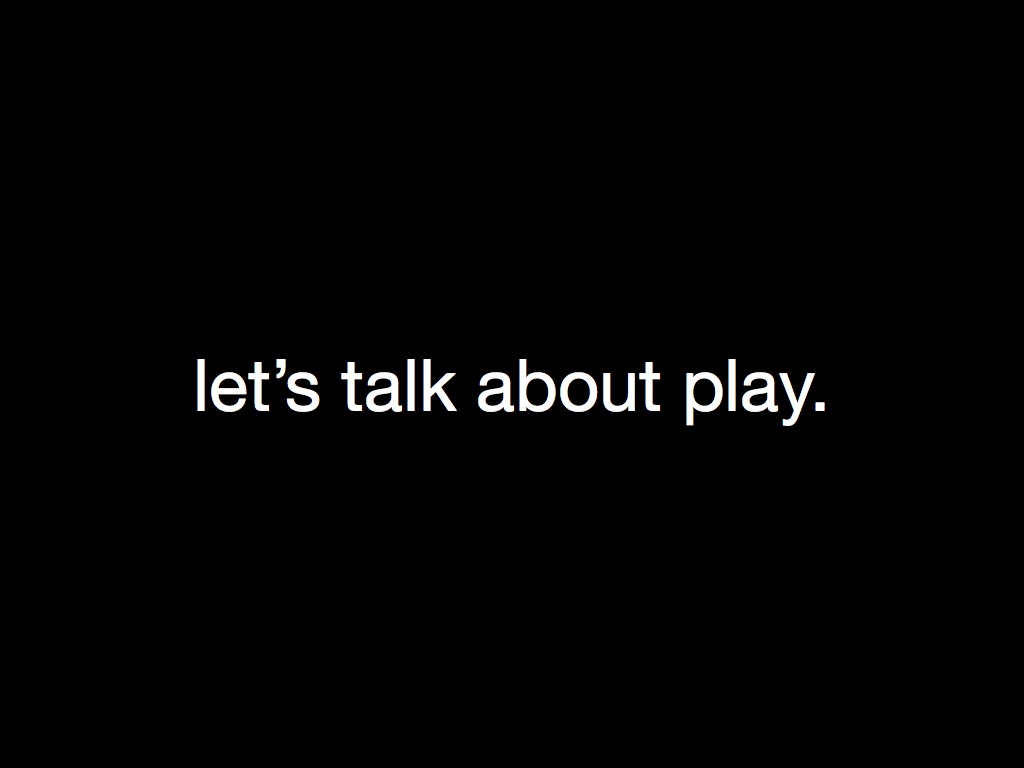
Thanks